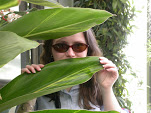Regarding the first question, the answer is: it depends.
Since many people get introduced to growing houseplants in the context of things like pothos, I think people have a natural assumption that taking and propagating cuttings is a normal part of the "houseplant game". Unfortunately, not all plants agree to play that game. So as you branch out into more esoteric plants, you'll want to get to know their habits.
Sinningias can be considered to fall into roughly two groups. Those with sort-of determinate growth, and those with more indeterminate growth. You may have heard these terms in conjunction with tomato varieties. The idea is similar, though Sinningias of course are not grown as annual crops. In short, some plants will produce stems with a terminal size, more or less, while others, can just keep on going and going until frost cuts it off. The former is "determinate", the latter "indeterminate".
Sinningia sellovii is an excellent example of indeterminate growth habit. The stems are of variable lenght with many pairs of leaves, and they flower on top. Also, notably, the stems can also branch, before or after flowering, or in response to damage at the apex. This branching tells you there is potential at those nodes to also form roots, and they can and will do so. Success rate is variable with rooting these and getting them to produce tubers, but I'd say at least 50% of cuttings I've tried will do it. You want those tubers to form, because that is what ensures the rooted cutting will survive as a plant on its own long term. If you try it, root them in potting media of choice.
IMPORTANT: if you try this approach, root stem cuttings, not leaf cuttings. As far as I know, leaf cuttings, as is done with violets, will not root for any species.
Sinningia leuchotricha, one of the most popular sinningia, is a good example of determinate growth. The stem grows up, has leaves and flowers at the top, and more or less that is the end of the story. The leaves collect light energy and feed that tuber all summer, then dry up and fall off at the end of summer. Sinningia with this habit generally don't root well, if at all, from cuttings, and will similarly not produce a tuber if they do. I will concede there are occasional exceptions, where if you get just enough tuber chunk with the stem, the tuber chunk may form roots and successfully likewise a new tuber. This is pretty hard to pull off though.
Well...fine then how does one propagate Sinningia leucotricha and its kin? From seed of course! Its pretty easy to pollinate them, and sown relatively fresh, the seed often has amazingly high germination rates. I like to use those clamshell containers that salad greens come in. Partially fill with your soil mix of choice, sprinkle the seed on top, mist to settle the seed down. Close lid and keep warm. Germination usually takes a couple weeks.
Now I said "roughly two groups". There's a third flavor, and then still legend tells of a forth propagation option.
The third flavor of Sinningia is those that naturally form satellite tubers. Most of these are also indeterminate or semi-indeterminate in habit. A satellite tuber is an extra tuber that forms on its own along the stem somewhere, or on a stolon. Species that can do this include Sinningia bullata and eumorpha. In these, you can keep the extra tubers together, or separate them out as individuals to share when they get some mass to them. Despite the formation of satellite tubers, I haven't seen bullata successfully root from cuttings without having an already existing tuber, however, and so far they only produce satellite tubers on young plants. Perhaps more testing needs to be done.
The final option for propagating sinningia, after 1) seed, 2) cuttings, 3) satellite tubers, is *drumroll please* 4) cutting tubers. In theory you cut top to bottom splitting the growing point in half or thirds, like one might split other kinds of tubers. I have not tried this, so I cannot advocate for any level of efficacy. I find the idea horrifying, honestly, since it so much easier to produce a large number of new, happy baby tubers by seed, and if you cut a tuber, you now have some weird looking tubers. So that means if you try it, you're on your own. But if you have tried it, please do comment below and tell us how it went!
PS: looking for where to get some sinningia plants to get you started? Browse the available plants at juliaredman.com!! :D












